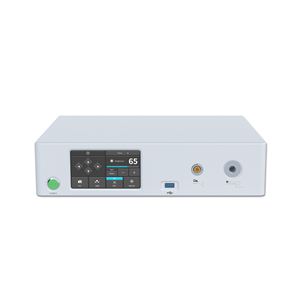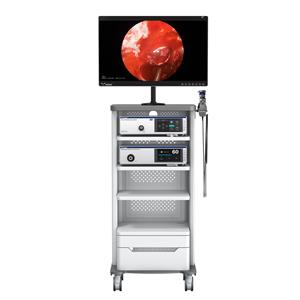Arthroskopie bei Milchkühen bei Verdacht auf rheumatoide Arthritis
In veterinary medicine, animal arthroscopy is more and more widely used. For large animals such as horses and cattle, arthroscopy is very important in orthopedics. It can check the degree of trauma and early joint degeneration; for small cartilage damage, slippage Membrane thickening, rickets, etc. can be treated at the same time as the diagnosis. For small animals such as dogs and cats, animal arthroscopy can diagnose and treat small animal diseases, such as chronic arthritis, joint pain, joint swelling, unilateral posterior elbow muscle protrusion or broken coracoid, etc.
Arthroscopy in dairy cows for suspected rheumatoid arthritis
Arthroscopy method:
After lying on the left side of the affected cow, 3ml of 846 fluid was injected into the neck muscle. Disinfect the knee joint of the affected limb. Cut the skin 0.5cm on the outside of the straight central ligament of the knee, pierce the trocar into the joint cavity, pull out the needle core, and the joint fluid will flow out. Is the plastic tube inserted through the lumen of the cannula, the depth exceeds the needle, and then 200-250ml of saline is injected through the cannula hole to expand the joint cavity. When injecting liquid, the surgeon uses his thumb to block the cannula port to prevent the expansion fluid from flowing out. After the plastic tube is drawn out, the arthroscope is inserted into the arthroscope, and the main body of the endoscope and the cold light source are connected for inspection.
Arthroscopy showed that the surface of the synovium was uneven and granular; the cartilage was irregularly eroded; local congestion and edema, the villi were short and thick and protruding in a cylindrical shape, and some villi were protruding wax-like polyps, a small amount scattered throughout the joint In the cavity, there was a mass of floating matter-like hyperplasia; the texture of the subsynovial blood vessels was unclear, cellulose exuded in the cavity, and flaky loose bodies. According to the morphological characteristics of the knee joint, rheumatoid arthritis is suspected.
Arthroscopic morphological characteristics: the normal knee joint synovium is pale yellow and white, with thin walls, sparse blood vessels can be seen through the texture, the surface is shiny, and evenly distributed villi can be seen.
Note that when using arthroscopy to examine the knee joint of a cow, it must be performed under general anesthesia. When keeping, the surgical department should be fully exposed to facilitate inspection and ensure safety.




